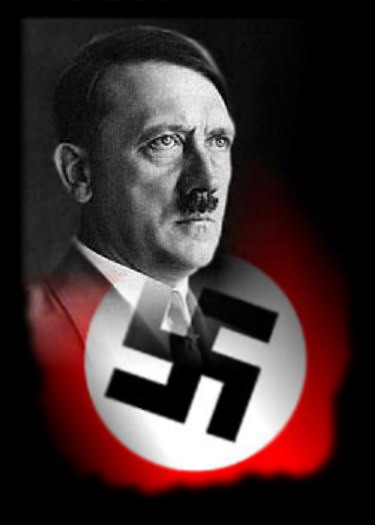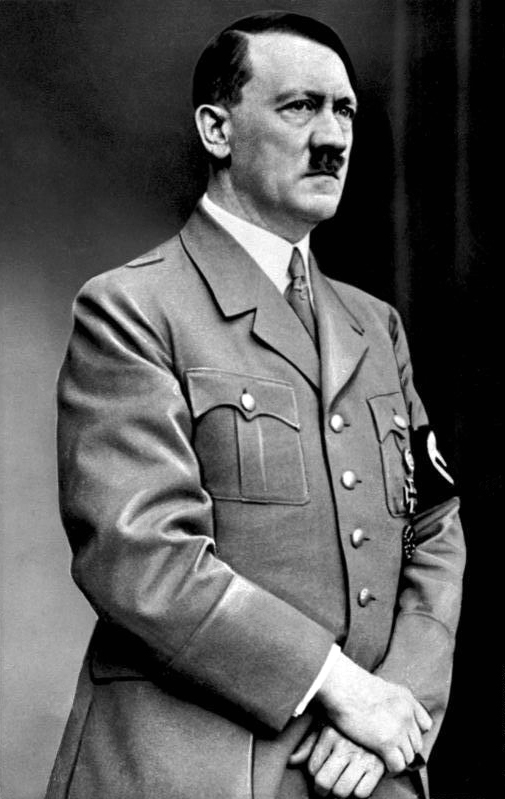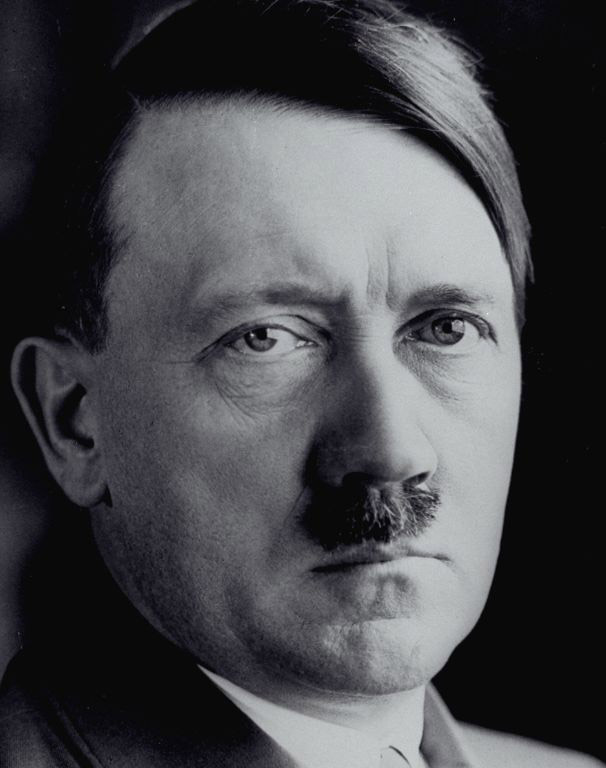In July 1919, Hitler was appointed Verbindungsmann (intelligence agent) of an Aufklärungskommando (reconnaissance commando) of the Reichswehr, both to influence other soldiers and to infiltrate the German Workers' Party (DAP). While he studied the activities of the DAP, Hitler became impressed with founder Anton Drexler's antisemitic, nationalist, anti-capitalist and anti-Marxist ideas.[55] Drexler favoured a strong active government, a "non-Jewish" version of socialism and solidarity among all members of society. Drexler was impressed with Hitler's oratory skills and invited him to join the DAP, which Hitler accepted on 12 September 1919,[56] becoming its 55th member.
A copy of Adolf Hitler's German Workers' Party (DAP) membership card
At the DAP, Hitler met Dietrich Eckart, one of its early founders and member of the occult Thule Society.[58] Eckart became Hitler's mentor, exchanging ideas with him and introducing Hitler to a wide range of people in Munich's society.[59] Hitler thanked Eckart and paid tribute to him in the second volume of Mein Kampf. To increase the party's appeal, the party changed its name to the Nationalsozialistische Deutsche Arbeiterpartei (National Socialist German Workers Party – NSDAP).[60] Hitler also designed the party's banner of a swastika in a white circle on a red background to make a visual impact.
Hitler was discharged from the army in March 1920 and began participating full time in the party's activities. By early 1921, Hitler had become highly effective at speaking in front of large crowds. In February 1921, Hitler spoke to a crowd of over six thousand in Munich.[62] To publicize the meeting, two truckloads of party supporters drove around waving swastikas and throwing leaflets. Hitler soon gained notoriety for his rowdy, polemic speeches against the Treaty of Versailles, rival politicians, and especially directed against Marxists and Jews.[63] At the time, the NSDAP was centred in Munich, a major hotbed of anti-government German nationalists which was determined to crush Marxism and undermine the Weimar Republic.[64]
In June 1921, while Hitler was on a trip to Berlin (with Eckart) for a fund-raising mission, there was a mutiny among the DAP in Munich, most notably within the executive committee whose members who wanted to merge with the rival German Socialist Party (DSP) and considered Hitler to be too overbearing.[65] Hitler returned to Munich and in anger tendered his resignation from the party on 11 July 1921. However, committee members realized that Hitler's resignation would mean the end of the party.[66] Hitler announced he would only return on the conditions that he replace Drexler as party chairman and the party headquarters would remain in Munich.[67] The committee agreed to his demands and Hitler rejoined the party as member 3,680.[67] The conflict was not over; Hermann Esser and his allies printed 3,000 copies of an anonymous pamphlet attacking Hitler as a traitor to the party.[68] In the days which followed, Hitler spoke to a several packed houses and defended himself to thunderous applause. At the general membership meeting which followed, only one no vote was cast in relation to granting Hitler dictatorial powers with his chairmanship being officially and unanimously accepted.
Hitler's vitriolic beer hall speeches began attracting regular audiences. Early followers included Rudolf Hess, the former air force pilot Hermann Göring, and the army captain Ernst Röhm. The latter became head of the Nazis' paramilitary organization the Sturmabteilung (SA, "Storm Division"), which protected meetings and frequently attacked political opponents. A critical influence on his thinking at this period was the Aufbau Vereinigung,[70] a conspiratorial group formed of White Russian exiles and early National Socialists. The group, financed with funds channeled from wealthy industrialists like Henry Ford, introduced him to the idea of a Jewish conspiracy, linking international finance with Bolshevism.[71] Hitler also attracted the attention of local business interests, was accepted into influential circles of Munich society, and became associated with wartime General Erich Ludendorff during this time.
 Adolf Hitler
Adolf Hitler Adolf Hitler
Adolf Hitler Adolf Hitler
Adolf Hitler Adolf Hitler
Adolf Hitler Adolf Hitler
Adolf Hitler
No comments:
Post a Comment